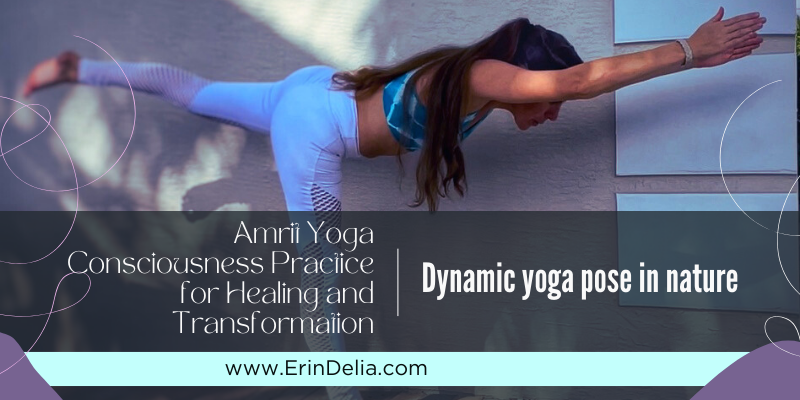Amrit Yoga is not about becoming more flexible or getting a workout – it's a profound consciousness practice that uses the body as a gateway to expanded awareness and deep healing. As a practitioner deeply immersed in the teachings of Guru Amrit Desai, I've experienced firsthand how Amrit Yoga benefits extend far beyond the physical realm into the depths of consciousness and spiritual transformation.
In our modern world, yoga has often been reduced to a form of exercise or stress relief. But Amrit Yoga, as taught by Guru Amrit Desai, is fundamentally different. It's a consciousness practice that uses physical postures as a vehicle for awakening, healing, and profound personal transformation.
What is Amrit Yoga? Understanding Consciousness Practice
Amrit Yoga is a unique approach to yoga that emphasizes consciousness over physical achievement. Unlike traditional yoga practices that focus on perfecting poses or building strength, Amrit Yoga uses the body as a laboratory for exploring consciousness and expanding awareness.
As Guru Amrit Desai often said, "The body is not separate from consciousness. Every limitation in the body is also a limitation in consciousness." This profound understanding forms the foundation of Amrit Yoga practice – recognizing that our physical boundaries are mirrors of our mental, emotional, and spiritual boundaries.
Amrit Yoga Benefits: Beyond Physical Flexibility
The benefits of Amrit Yoga extend far beyond what most people expect from a yoga practice. This consciousness practice offers profound healing and transformation on multiple levels:
1. Amrit Yoga for Healing and Transformation
Amrit Yoga benefits include deep healing on physical, emotional, and spiritual levels. Through conscious movement and awareness, practitioners can:
- Release stored trauma and emotional blocks
- Heal chronic pain and physical tension
- Process and integrate difficult emotions
- Access deeper levels of self-awareness
- Experience profound spiritual insights
2. Consciousness Expansion Through Amrit Yoga Practice
Amrit Yoga is fundamentally a consciousness practice that helps you:
Expand Awareness: Through conscious movement and breath, Amrit Yoga practice helps you develop greater awareness of your thoughts, emotions, and physical sensations.
Access Higher States: The practice can facilitate experiences of expanded consciousness, inner peace, and spiritual connection.
Develop Intuition: Regular Amrit Yoga practice strengthens your connection to inner wisdom and intuitive knowing.
"In Amrit Yoga, we don't practice to become better at yoga. We practice yoga to become better at life." - Guru Amrit Desai
Standing at the Edge: The Power of Limits in Amrit Yoga
One of the most profound aspects of Amrit Yoga is its approach to limitations. Rather than trying to overcome or ignore our limits, Amrit Yoga teaches us to stand at the edge of our boundaries and explore what lies beyond them.
Understanding the Edge of Consciousness
Guru Amrit Desai taught that "The edge is where transformation happens. It's not about pushing through your limits, but about standing at the boundary and expanding your consciousness beyond it."
In Amrit Yoga practice, when you encounter a physical limitation – whether it's tightness, pain, or inability to move further – you're actually encountering a limitation in your consciousness. The practice teaches you to:
- Recognize the edge as a gateway to growth
- Stay present with discomfort without trying to escape it
- Use the body's limitations as mirrors of consciousness
- Expand awareness beyond the limitation
- Transform resistance into acceptance and growth
Amrit Yoga Practice: The Art of Conscious Movement
Amrit Yoga practice is characterized by several key principles that distinguish it from other forms of yoga:
1. Conscious Movement and Awareness
Every movement in Amrit Yoga is done with full awareness. As Guru Amrit Desai emphasized, "Movement without consciousness is just exercise. Movement with consciousness is yoga."
2. The Edge Practice
Amrit Yoga practice involves finding and working at your edge – the point where you feel resistance or limitation. This edge becomes a teacher, showing you where your consciousness is contracted and where it can expand.
3. Integration of Body, Mind, and Spirit
Unlike practices that separate the physical from the spiritual, Amrit Yoga recognizes that every physical sensation, emotion, and thought is interconnected and reflects the state of your consciousness.
Amrit Yoga for Healing: The Therapeutic Benefits
The healing benefits of Amrit Yoga are profound and well-documented. This consciousness practice can help with:
Physical Healing
Amrit Yoga benefits for physical healing include:
- Release of chronic tension and pain
- Improved circulation and energy flow
- Enhanced flexibility and mobility
- Better posture and alignment
- Strengthened immune system
Emotional and Mental Healing
Amrit Yoga practice supports emotional and mental healing by:
- Processing and releasing stored emotions
- Reducing stress and anxiety
- Improving mental clarity and focus
- Healing trauma and emotional wounds
- Developing emotional resilience
The Growth Edge: How Amrit Yoga Facilitates Transformation
Perhaps the most powerful aspect of Amrit Yoga is its ability to facilitate profound personal growth and transformation. As Guru Amrit Desai taught, "Growth happens at the edge of your comfort zone. Amrit Yoga helps you find that edge and expand beyond it."
Expanding Beyond Limitations
Through regular Amrit Yoga practice, you learn to:
Recognize Patterns: The practice helps you identify limiting patterns in your body, mind, and emotions that are holding you back.
Transform Resistance: Instead of fighting against limitations, you learn to work with them, transforming resistance into acceptance and growth.
Expand Consciousness: As you work at your edges, your consciousness naturally expands, allowing you to see and experience life from new perspectives.
Amrit Yoga Practice: Getting Started with Consciousness
To begin your journey with Amrit Yoga as a consciousness practice:
1. Find a Qualified Teacher
Amrit Yoga is best learned from a certified teacher who understands the consciousness aspects of the practice. Look for teachers trained in the Amrit Method.
2. Start with Awareness
Begin by developing awareness of your body, breath, and mind. Simple practices like conscious breathing and body scanning can help you develop this awareness.
3. Practice at Your Edge
Learn to recognize your edge – the point where you feel resistance or limitation. This is where growth happens.
4. Be Patient and Consistent
Consciousness expansion takes time. Regular, consistent practice is more important than long, infrequent sessions.
The Transformative Power of Amrit Yoga
Amrit Yoga offers a unique and powerful approach to personal transformation and consciousness expansion. Unlike other forms of yoga that focus primarily on physical benefits, Amrit Yoga recognizes that the body is a gateway to deeper levels of awareness and healing.
As Guru Amrit Desai beautifully expressed, "Yoga is not about touching your toes. It's about what you learn on the way down." In Amrit Yoga, every movement, every breath, every moment of awareness becomes an opportunity for growth, healing, and transformation.
If you're ready to explore yoga as a consciousness practice rather than just physical exercise, Amrit Yoga offers a profound path to healing, transformation, and expanded awareness. Remember, the journey is not about achieving perfect poses, but about expanding your consciousness and discovering the limitless potential within you.

